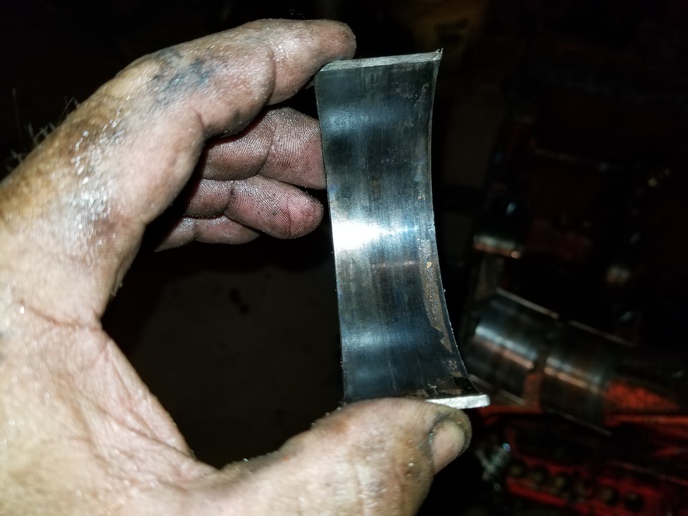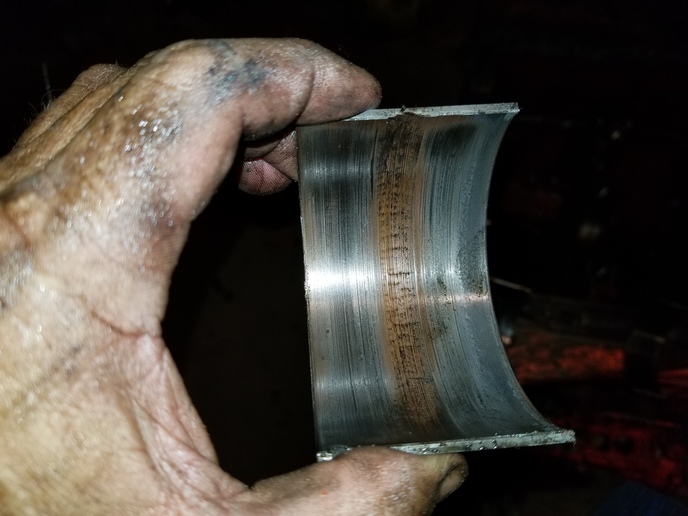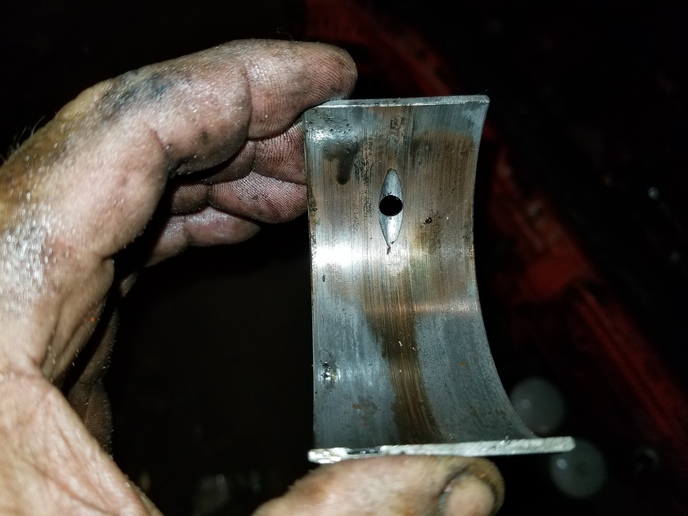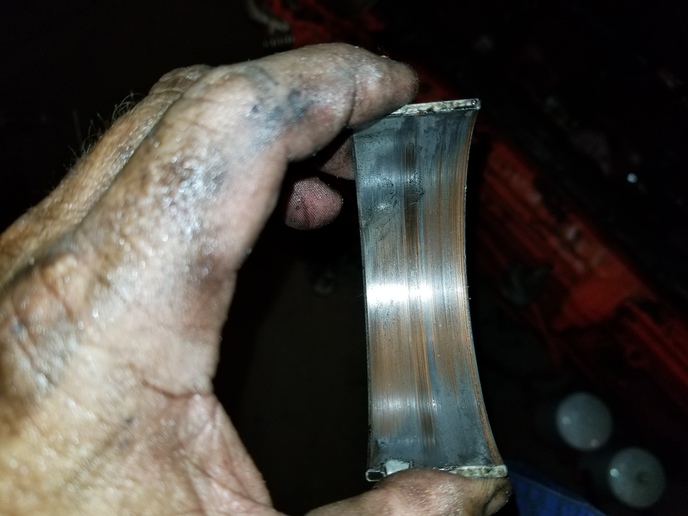jon f mn
Well-known Member
I posted this on the case forum too, but thought I would share here to see if anyone has any ideas.
Finally got me 1030 motor apart and it is worse than I thought. The turned bearing was the front one, but the rear one was hot and failing as well. And all the rear bearings show excessive wear. I blew out all the oil gallies and found no obstructions. All the main bearings were in correctly with the oil holes ligned up corectly. I had 40 lbs of pressure on a manual gage and the oil light works and was not on til the end and then only at idle. So I'm not seeing how lack of oil was the problem, but that is what it looks like. The engine has about 8 hours since the overhaul. Any ideas?
Main bearing number is hmb2810
Rod bearing number is hmb2105




Finally got me 1030 motor apart and it is worse than I thought. The turned bearing was the front one, but the rear one was hot and failing as well. And all the rear bearings show excessive wear. I blew out all the oil gallies and found no obstructions. All the main bearings were in correctly with the oil holes ligned up corectly. I had 40 lbs of pressure on a manual gage and the oil light works and was not on til the end and then only at idle. So I'm not seeing how lack of oil was the problem, but that is what it looks like. The engine has about 8 hours since the overhaul. Any ideas?
Main bearing number is hmb2810
Rod bearing number is hmb2105





